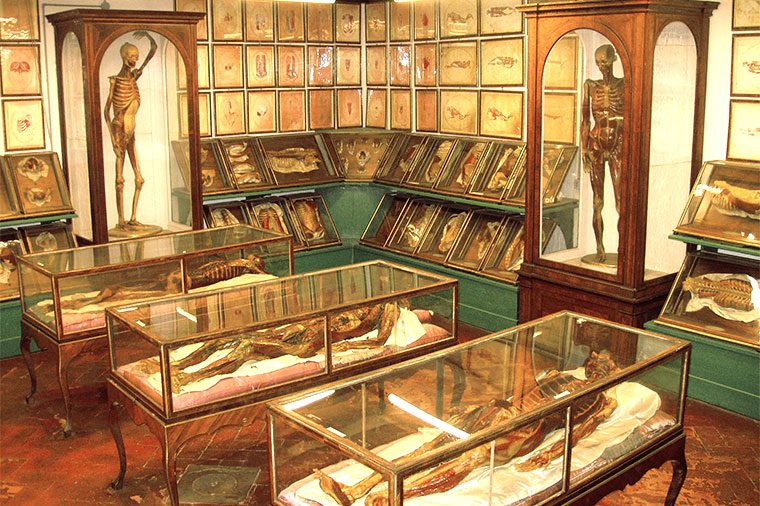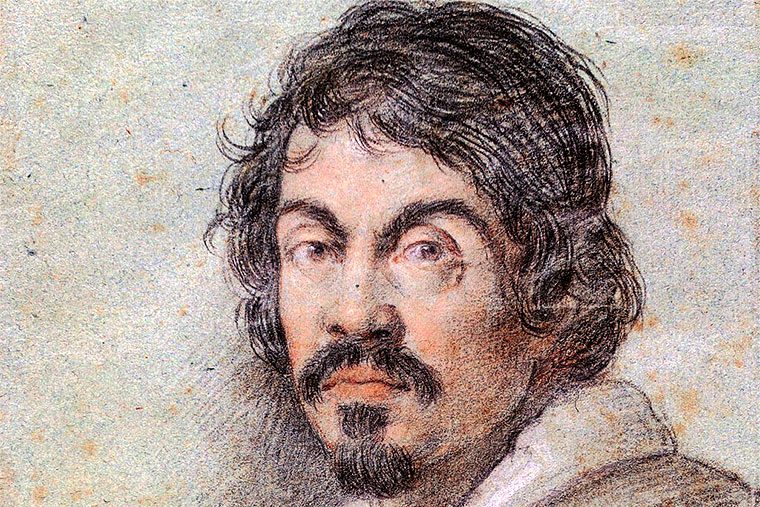One of the most macabre and moving self-portraits in the world is in the Borghese Gallery in Rome. It’s not labelled as a self-portrait – it’s David with the Head of Goliath. This late painting by Caravaggio depicts the young hero David holding the severed head of Goliath; instead of rejoicing in his victory, David looks at the bloody head of Goliath with a troubled, almost pitying expression. Goliath, as many art critics have pointed out, bears an uncanny resemblance to Caravaggio himself. Why would the artist choose to paint such a disturbing self-portrait?
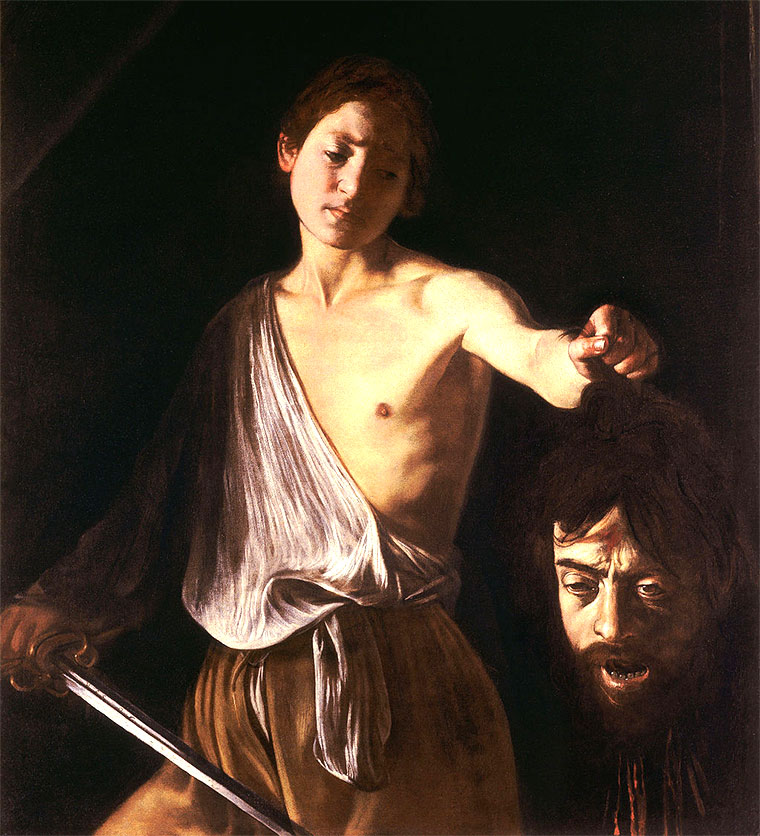
To understand Caravaggio, we need to look at his life in Rome. Caravaggio was born in Milan and died in Tuscany, but it was in Rome that he spent some of the most productive (and turbulent) years of his life. The young painter left Milan in 1592, and arrived in Rome “naked and extremely needy…without fixed address and without provision…short of money”. He had been compelled to leave after getting into various fights with the wrong people – a recurrent theme in the life of the artist.
Over the next few years Caravaggio honed his talents in the workshops of Rome, and rose to fame with his theatrical, psychologically complex paintings such as Judith Beheading Holofernes and the Martyrdom of St Matthew. Although he was not the first artist to use chiaroscuro, Caravaggio understood the dramatic potential of the technique, using it as a powerful, dominant feature in most of his paintings. He received increasingly prestigious commissions from wealthy patrons, and was regarded not only as one of the greatest painters in Rome, but also as one of the most talented artists of his age.
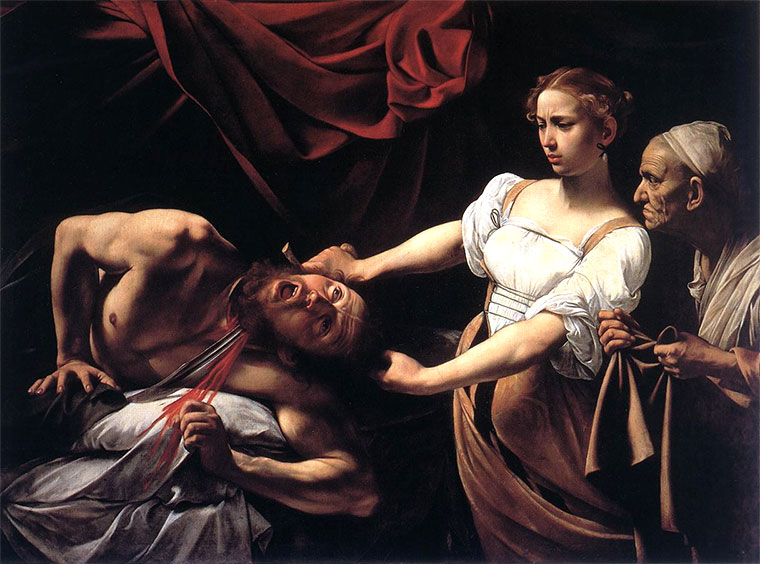
However, not everyone appreciated or even approved of Caravaggio’s work. Some people found his gritty realism offensive, particularly in the context of religious paintings. The original version of the Calling of St Matthew was rejected due to the unflattering, harshly realistic portrayal of the saint – Matthew looks more like a peasant than a saint, and seems to be illiterate. In Conversion on the Way to Damascus Caravaggio made the unconventional decision to give the horse more prominence than St Paul, leading to the following conversation between Caravaggio and a church official:
“Why have you put a horse in the middle, and Saint Paul on the ground?”
“Because!”
“Is the horse God?”
“No, but he stands in God’s light!”
Caravaggio also caused controversy by allegedly using a prostitute as a model for the Virgin Mary. Another depiction of the Virgin Mary, Madonna and Child with St Anne, lasted just two days in St Peter’s Basilica. It was condemned for its “vulgarity”, perhaps on account of Mary’s cleavage, and a cardinal’s secretary observed that although Caravaggio could paint well, he was “of a dark spirit”.
Caravaggio was constantly getting into trouble, and was notorious for brawling even in an age when street fights were relatively common. There are accounts of minor misdemeanours, like throwing a plate of artichokes in the face of a waiter, but there were also more serious incidents. He was sued by his landlady after cutting a hole in the ceiling – perhaps in a quest for the perfect light for his paintings – and responded by pelting her window with stones. He was even imprisoned in the infamous Tor di Nona prison for defying a ban on weapons, after he was spotted wandering around with a sword near Piazza Navona.
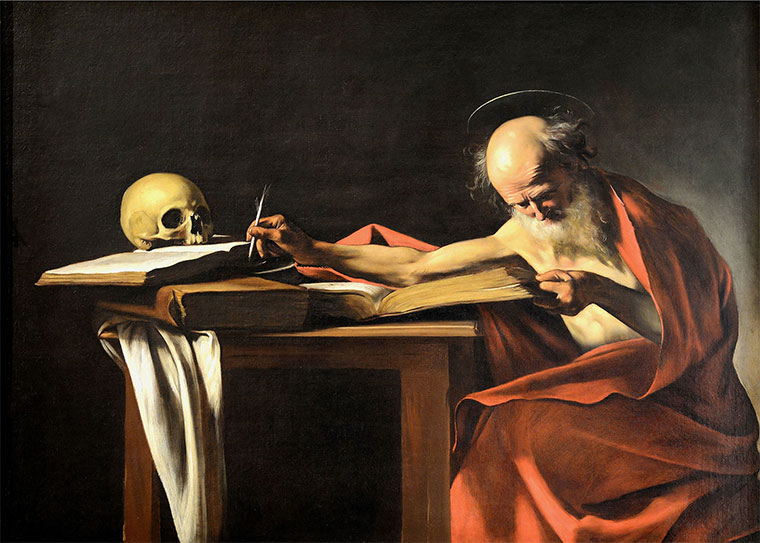
Caravaggio’s erratic behaviour and mood swings have led to speculations that he may have suffered from mental illness, and some believe that he was bipolar. There’s no doubt that he had a temper, and at times, he seemed to be his own worst enemy. But in spite of this, he was still able to produce extraordinary paintings, from the seductive Bacchus to the graphic violence of Judith Beheading Holofernes. Many of these masterpieces can still be seen the galleries and churches of Rome, including the Borghese Gallery, Palazzo Barberini, San Luigi dei Francesi and Santa Maria del Popolo.
In 1606 Caravaggio was once again forced to flee. A brawl ended in the death – perhaps unintentional – of a young man, and Caravaggio had no choice but to leave Rome for Naples. Some believe that during this period of exile, he painted David with the Head of Goliath, his strange self-portrait. Although it wasn’t the first time that Caravaggio had painted himself into a painting – look at the man in the background of the Martyrdom of St Matthew, or the tiny face hidden in the carafe of wine in Bacchus – but it was certainly the most emotive, complex self-portrait Caravaggio ever produced.
The painting may have been intended as a gift for Cardinal Scipione Borghese, who would have had the power to grant a papal pardon for the murder Caravaggio had committed in Rome. In this light, the painting takes on a new, deeply moving significance – Caravaggio admits his sins and offers up his own severed head in a plea for mercy.
Before Caravaggio could receive the papal pardon, he died in mysterious circumstances; lead poisoning and murder on the order of the Knights of Malta are two of the most popular theories. Although we may never know the truth, it could be argued that the paintings tell us more about the man than bone analysis ever will. If you want to get to know Caravaggio, visit the Borghese Gallery and look into the eyes of Goliath.
Alexandra Turney works for Through Eternity Tours. Through Eternity offer a Caravaggio tour in Rome.




